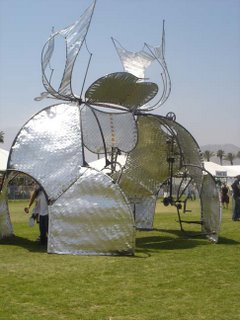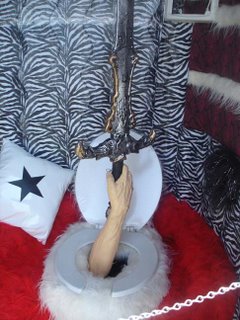WASHINGTON -- The key to creating a Harry Potter-like invisibility cloak lies in manmade materials unlike any in nature or the Hogwarts School of Witchcraft and Wizardry, researchers say.
They're laying out a blueprint for turning science fiction into reality. And they say that, in theory, nothing's stopping them from making such a cloak.
Well, almost nothing: They still need to perfect the manufacture of those exotic materials with an ability to steer light and other forms of electromagnetic radiation around a cloaked object, rendering it as invisible as something tucked into a hole in space.
"Is it science fiction? Well, it's theory and that already is not science fiction. It's theoretically possible to do all these Harry Potter things, but what's standing in the way is our engineering capabilities," said John Pendry, a physicist at the Imperial College London. Details of the study, which Pendry co-wrote, appear in Thursday's online edition of the journal Science.
Scientists not involved in the work said it presents a solid case for making invisibility an attainable goal.
"This is very interesting science and a very interesting idea and it is supported on a great mathematical and physical basis," said Nader Engheta, a professor of electrical and systems engineering at the University of Pennsylvania. Engheta has done his own work on invisibility using novel materials called metamaterials.
Pendry and his co-authors also propose using metamaterials because they can be tuned to bend electromagnetic radiation -- radio waves and visible light, for example - in any direction.
A cloak made of those materials, with a structure designed down to the submicroscopic scale, would neither reflect light nor cast a shadow.
Instead, like a river streaming around a smooth boulder, light and all other forms of electromagnetic radiation would strike the cloak and simply flow around it, continuing on as if it never bumped up against an obstacle. That would give an onlooker the apparent ability to peer right through the cloak, with everything tucked inside concealed from view.
"Yes, you could actually make someone invisible as long as someone wears a cloak made of this material," said Patanjali Parimi, a Northeastern University physicist and design engineer at Chelton Microwave Corp. in Bolton, Mass. Parimi was not involved in the research.
Such a cloak does not exist, but early versions that could mask microwaves and other forms of electromagnetic radiation could be as close as 18 months away, Pendry said. He said the study was "an invitation to come and play with these new ideas."
"We will have a cloak after not too long," he said.
The Pentagon's Defense Advanced Research Projects Agency supported the research, given the obvious military applications of such stealthy technology.
While Harry Potter could wear his cloak to skulk around Hogwarts, a real-world version probably would not be something just to be thrown on, Pendry said.
"To be realistic, it's going to be fairly thick. Cloak is a misnomer. 'Shield' might be more appropriate," he said.
Copyright 2006 by
The Associated Press. All rights reserved. This material may not be published, broadcast, rewritten or redistributed.


























































